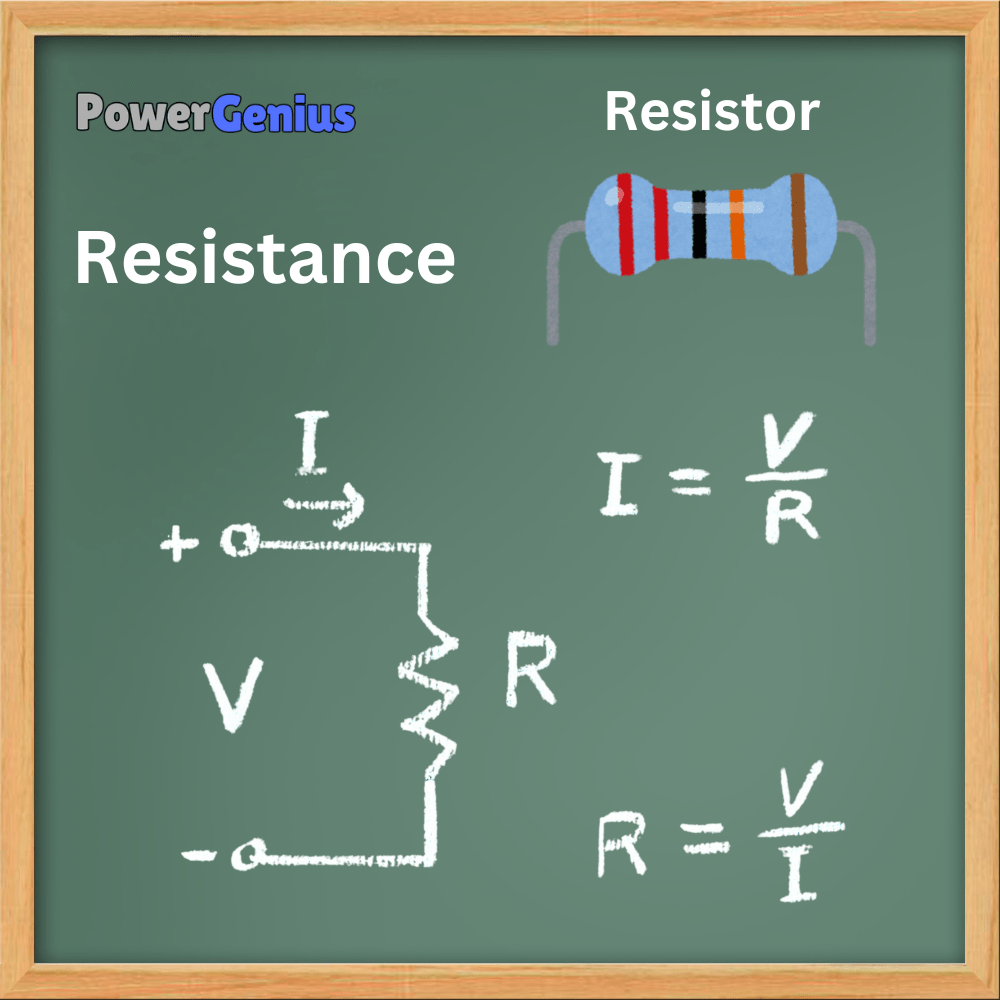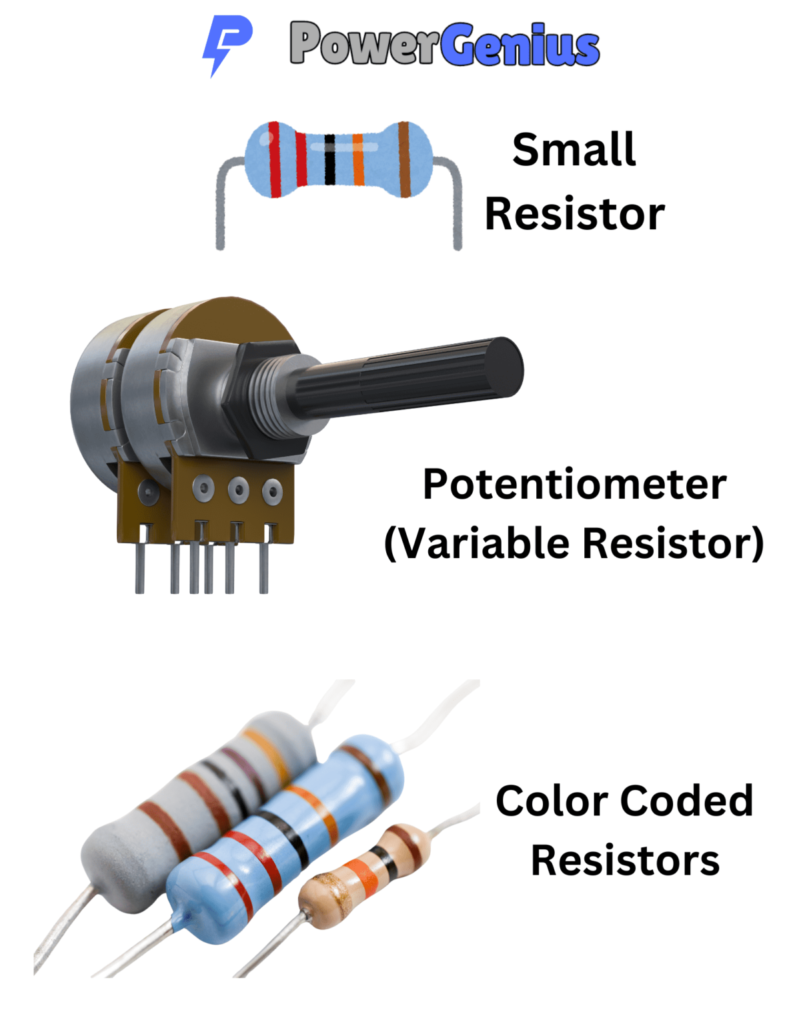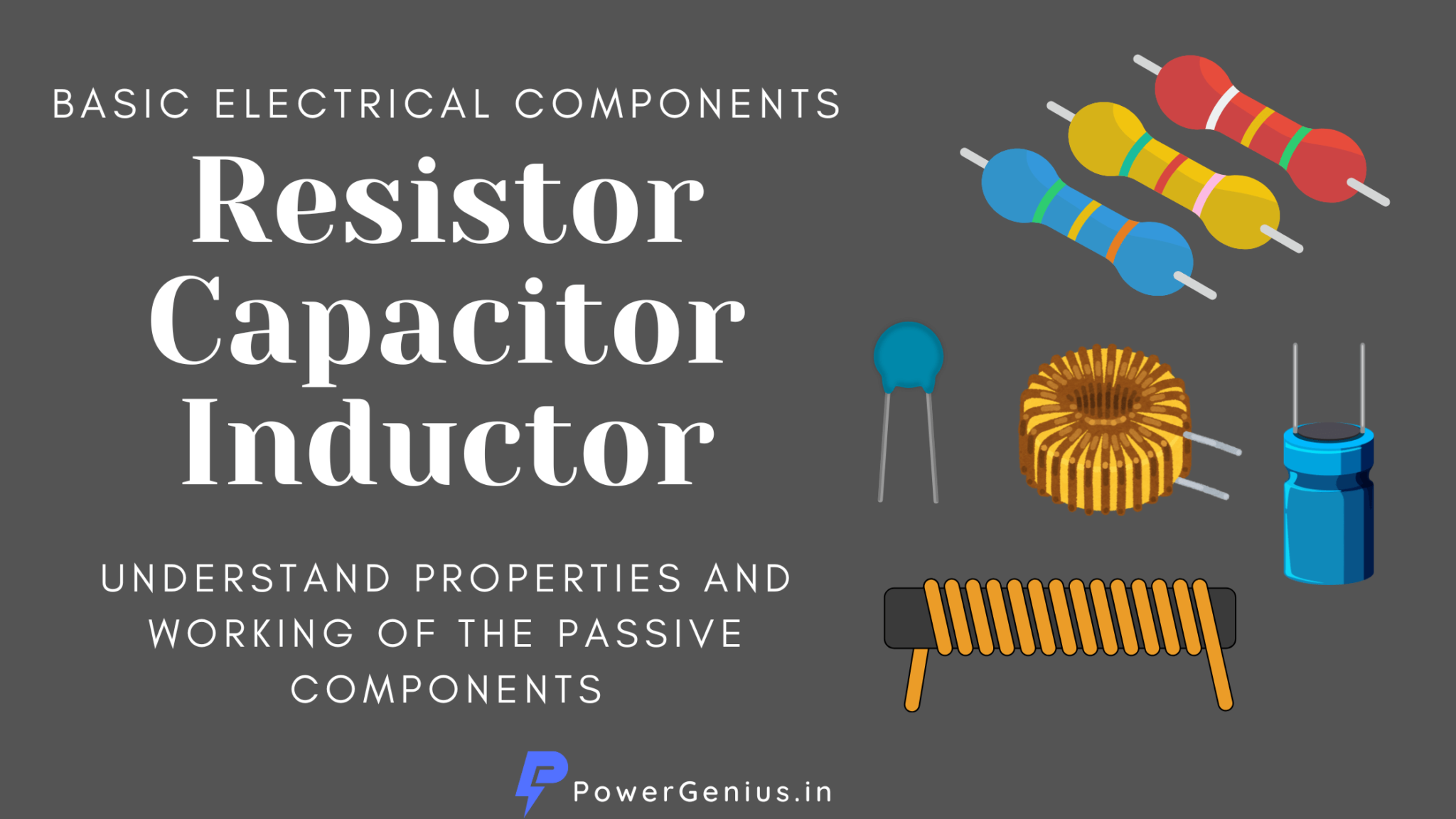The world of complex electrical systems made of several circuits and components may seem difficult to understand for beginners, but at the heart of every complex electrical system lies these three fundamental components: Resistors, Capacitors and Inductors. These components are the building blocks of electrical circuits.
These elements are called as passive elements, meaning that they do not supply power to the electrical circuit but instead consume it. So today we will understand the function, properties and significance of these components in detail.
Resistors
Resistors are perhaps the most ubiquitous components in electrical circuits, serving as the foundation for controlling current and voltage levels. A Resistor has a property of opposing the flow of electrical current, called resistance. It is a passive element which means it consumes electrical power. The power consumed is dissipated in the form of heat.

As we have learnt in the previous post, the relation between Voltage, Current and Resistance can be determined by the ohm’s law. As the value of the resistance is increased, the more it opposes the flow of current, hence it is basically used to regulate the flow of current in an electrical circuit.
Resistance Value: It is measured in ohms (Ω). It basically determines how much a resistor opposes the flow of current.
Power Rating: The maximum amount of power a resistor can dissipate without damage is its power rating, typically measured in watts (W).
Color Coding: Resistors are often color-coded to denote their resistance values, providing a visual cue for engineers and hobbyists. While larger resistors have their values printed on itself.

Capacitors
Capacitors, with their ability to store and release electrical energy, play an important role in various circuits, ranging from filtering out noise to storing data in memory modules. These passive components consist of two conductive plates separated by a dielectric material. When connected to supply, capacitors store the energy in the form of electrical charge between these plates. The positive plate holds positive charges and negative holds negative charges. When the supply is removed, the capacitor will hold the charge for a certain time. When the charged capacitor is connected to a load, a current will flow from positive plate to negative plate through the load, providing energy to the circuit.
Capacitance: Capacitance determines the amount of charge a capacitor can store per unit voltage. It is measured in farads (F).
Types of Capacitors: Electrolytic, ceramic, and tantalum capacitors are among the common types, each with its unique properties and applications.
Charging and Discharging: Capacitors charge and discharge according to the applied voltage and circuit configuration, influencing circuit behavior in diverse ways.
Inductors
Inductor, also called as coil, choke or reactor is often overlooked but indispensable in many circuits, harnesses the power of magnetic fields to store energy. These passive components consist of a coil of wire wound around a core material. It has a unique property to impede or oppose the change in the current passing through it. This property of Inductor is called Inductance, which is the ratio of voltage to the rate of change of current. The SI unit of Inductance is Henry (H), which is equivalent to Weber/Ampere.
Inductance: Measured in henry (H), inductance determines the ability of an inductor to store energy in the form of a magnetic field.
Inductive Reactance: Like resistance in resistors and capacitance in capacitors, inductors exhibit some opposition to the change in current, known as inductive reactance.
Applications: From smoothing out voltage fluctuations in power supplies to filtering signals in audio circuits, inductors have multiple applications in various domains of electronics.
Conclusion
Resistors, capacitors and inductors serve as the bedrock upon which the world of modern electronics is built. By understanding the principles governing these basic electrical elements, engineers and enthusiasts can unlock a world of possibilities in circuit design, troubleshooting, and innovation. Mastering these foundational components is an essential step towards learning electrical engineering.
For more such informative content follow us on Instagram to get daily updates.

